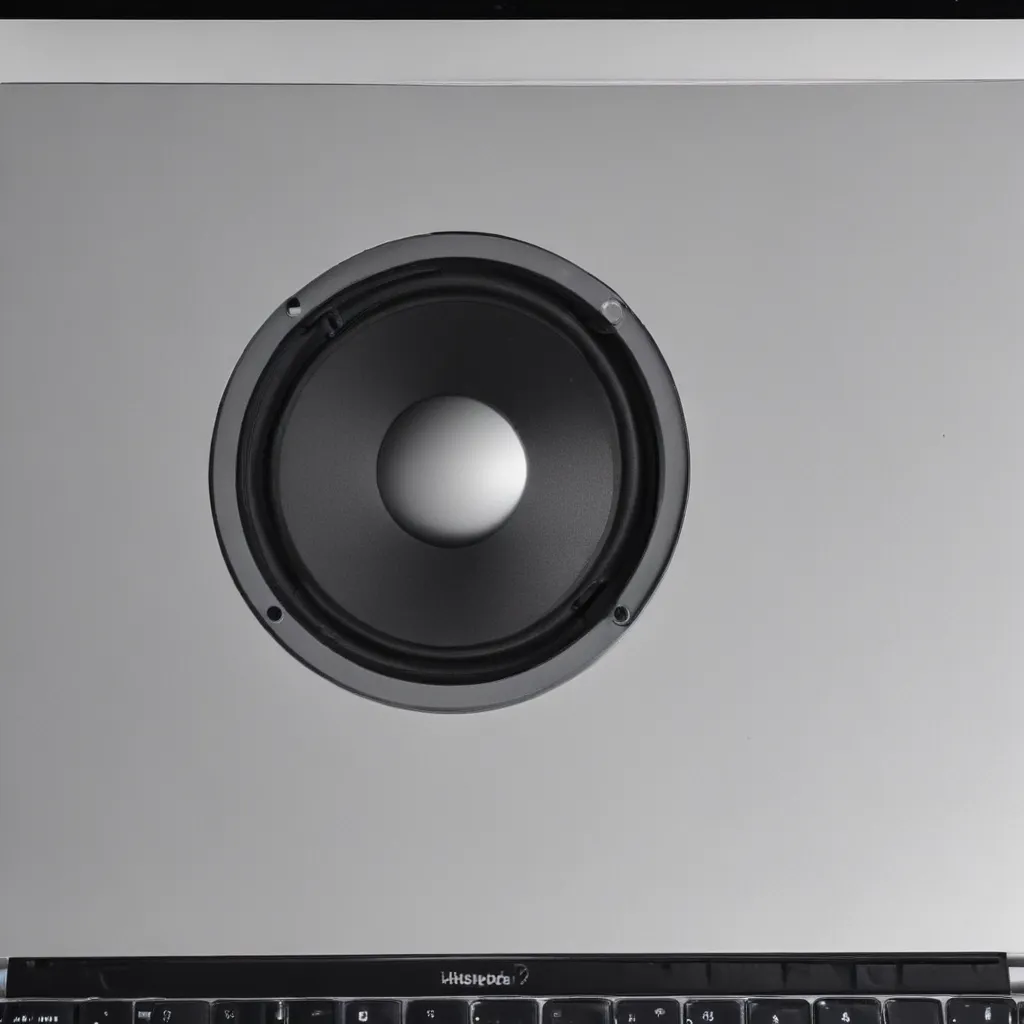MacBook Speaker Issues? How to Diagnose and Repair Problems
The Curious Case of the Crackling Cones
As a MacBook enthusiast, I’ve had my fair share of run-ins with audio issues. One day, while jamming out to my favorite tunes, I noticed something peculiar – my right speaker was sounding a bit off. It was as if someone had wrapped my eardrums in a layer of cellophane, muffling the once-crystal-clear sound. Concerned, I delved deeper, and lo and behold, I discovered the dreaded symptom – distortion and crackling.
Now, I know what you’re thinking: “This guy’s just making a big deal out of a little static.” But trust me, when it comes to your beloved MacBook’s audio setup, these issues can be more than just a minor annoyance. They can signify a deeper problem that, if left unchecked, could lead to even more costly repairs down the line. That’s why I’m here to share my expertise and guide you through the process of diagnosing and repairing those pesky speaker problems.
Diagnosing the Dilemma
The first step in solving any MacBook audio conundrum is to properly diagnose the issue. As with any good detective work, we need to gather clues and eliminate potential suspects. [1] Let’s start by checking the obvious – have you tried resetting the PRAM (Parameter RAM) or SMC (System Management Controller)? These simple steps can sometimes resolve minor audio glitches, as they help reset your MacBook’s system settings to their default configurations.
If that doesn’t do the trick, it’s time to dig a little deeper. According to the Apple support forums, [2] one user with a similar issue reported that the problem was likely a hardware failure. This could be anything from a faulty speaker driver to a damaged audio chipset. To confirm this, you’ll need to run some more in-depth tests.
One way to isolate the problem is to use an external audio source, such as a pair of headphones or external speakers. [3] If the audio quality is crystal-clear through these alternative channels, then you can be reasonably confident that the issue lies within your MacBook’s internal speaker system. On the other hand, if the distortion and crackling persist, it could be a sign of a more systemic problem, perhaps even a software-related one.
Repairing the Ruckus
Alright, now that we’ve identified the culprit, it’s time to get our hands dirty and fix this thing. If the issue is indeed a hardware failure, you’ll need to decide whether it’s worth the cost of repair or if you’d be better off investing in a set of external speakers.
The good news is that speaker replacements on MacBooks are relatively straightforward, at least for those with a bit of technical know-how. [1] You’ll need to disassemble the laptop, carefully remove the old speaker, and replace it with a new one. This process can be a bit daunting, especially if you’ve never taken apart a MacBook before, but with the right tools and a little patience, you can get it done.
If you’re not comfortable tackling the repair yourself, don’t worry – there are plenty of professional MacBook repair services out there that can handle the job for you. Just be prepared to part with a few quid, as these kinds of repairs can get a bit pricey.
But what if the problem isn’t hardware-related? Well, in that case, you’ll need to take a closer look at your MacBook’s software. [3] Start by checking for any recent updates or changes that may have interfered with your audio settings. You could also try resetting the CoreAudio and audio preferences, which can sometimes resolve software-related audio issues.
Encore! Encore!
Now, I know what you’re thinking: “This all sounds like a lot of work just to fix a little static.” But trust me, when it comes to your beloved MacBook’s audio setup, these issues are not to be taken lightly. A properly functioning speaker system is essential for everything from watching movies to conducting video calls, and trust me, you don’t want to be that person on the other end of the line sounding like you’re trapped in a tin can.
So, whether you decide to tackle the repair yourself or enlist the help of a professional, just remember: a little bit of elbow grease and a whole lot of determination can go a long way in restoring your MacBook’s audio glory. And who knows, you might even impress your friends with your newfound technical prowess. Happy repairing, my fellow MacBook enthusiasts!
[1] Knowledge from https://www.youtube.com/watch?v=JMv4ILiUgzs
[2] Knowledge from https://discussions.apple.com/thread/252060721
[3] Knowledge from https://support.apple.com/en-us/102411













